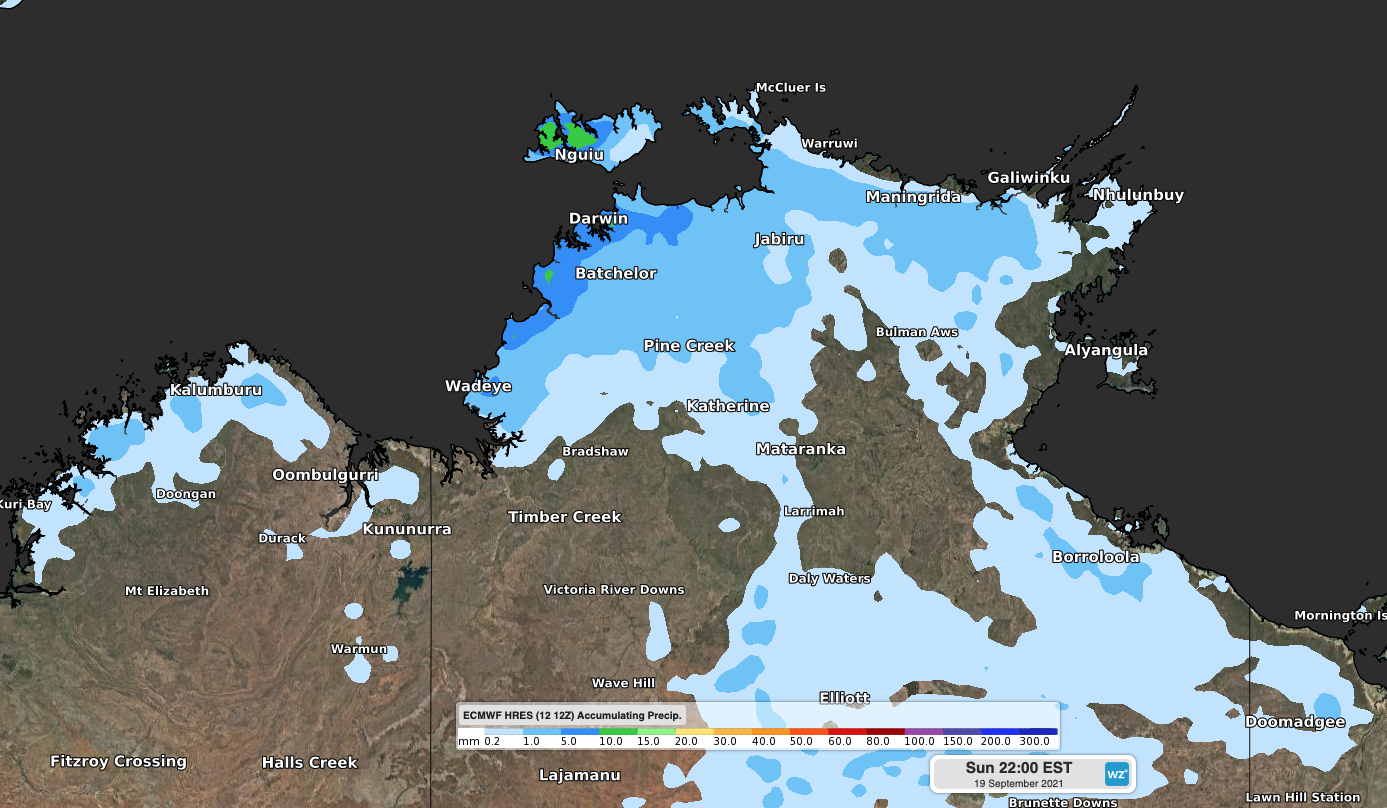Clouds building as Top End dry season nears end
There are signs that northern Australia’s dry season is nearing its end, with showers and storms on the forecast in the western Top End during the next few days.
The dry season across Northern Australia occurs between May and September, where sunny days and daytime temperatures in the low 30s are a regular occurrence on the forecast.
By contrast, the wet season occurs between October and April and is dominated by higher humidity, heavy rain and thunderstorms.
Darwin has only recorded four days of rain so far this dry season, with an impressive 19mm recorded in one day on Wednesday August 25.
However, the city could be in for some more rain this week. Accumulated rainfall totals over the Top End are predicted to be around 1-5mm during the next few days, with this rainfall falling early this week before sunnier skies return.

Image: Forecast accumulated rain this week (between Monday and Sunday), according to the ECMWF-HRES model.
Isolated pockets of 10-20mm are possible in parts of the western Top End during the next three days, including Darwin, particularly beneath thunderstorms.
This dry season rainfall could beat Darwin’s September average of 16.5mm, however the 24-hour rainfall totals should not come close to the September record of 70.6mm on the 21st in 1942.
Thunderstorms are on the Top End’s forecast on Monday and Tuesday and become more likely on Wednesday, which is a sign that the wet season is loosening its grip on northern Australia.
While this week’s rain won’t be enough to declare the official onset of the wet season, there are signs that the wet season could arrive earlier than usual this year, driven by warmer sea surface temperatures across northern Australia.